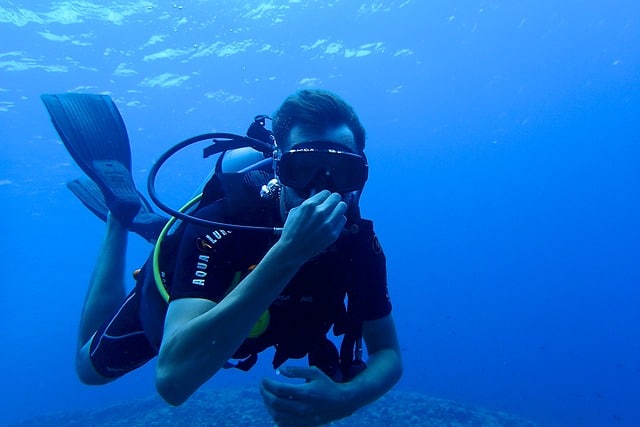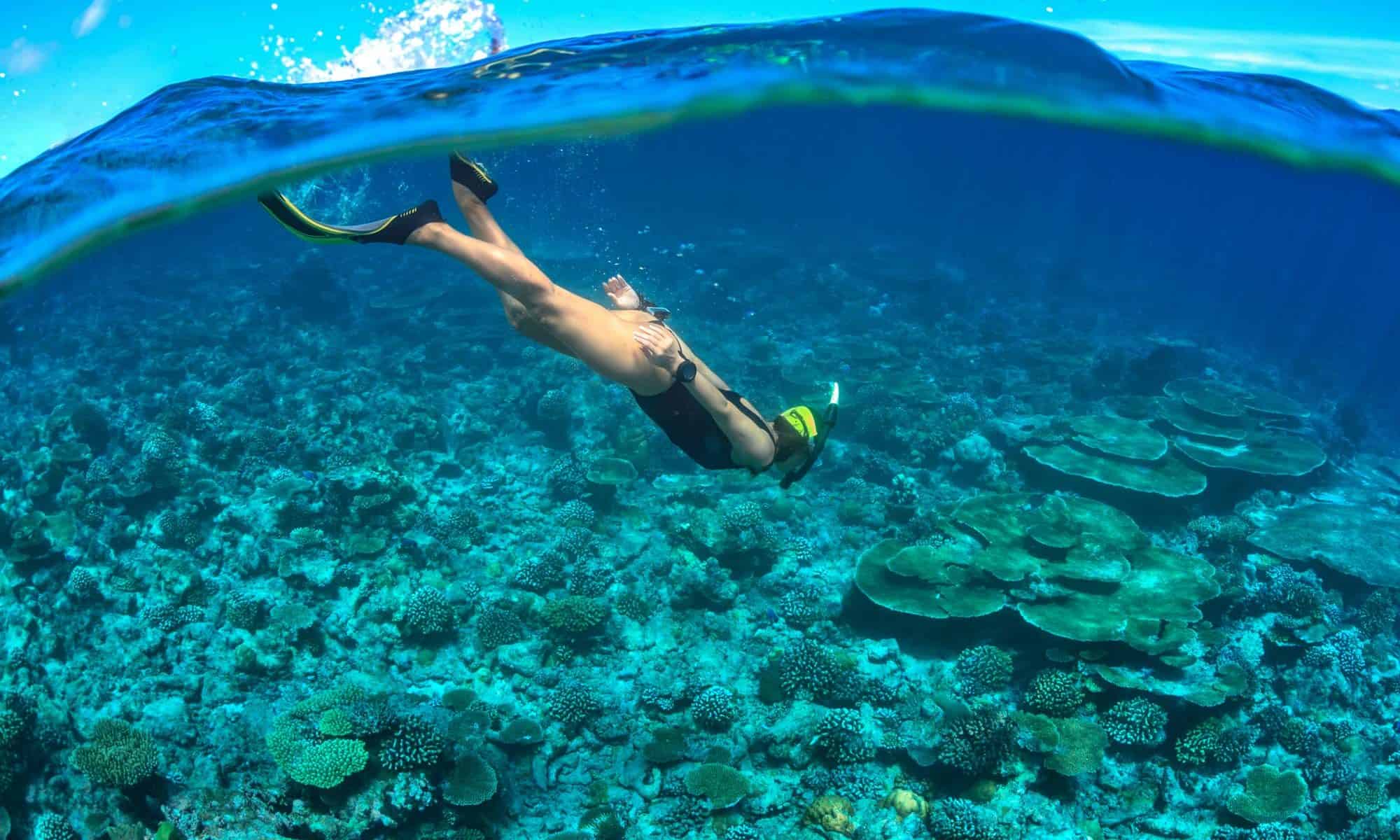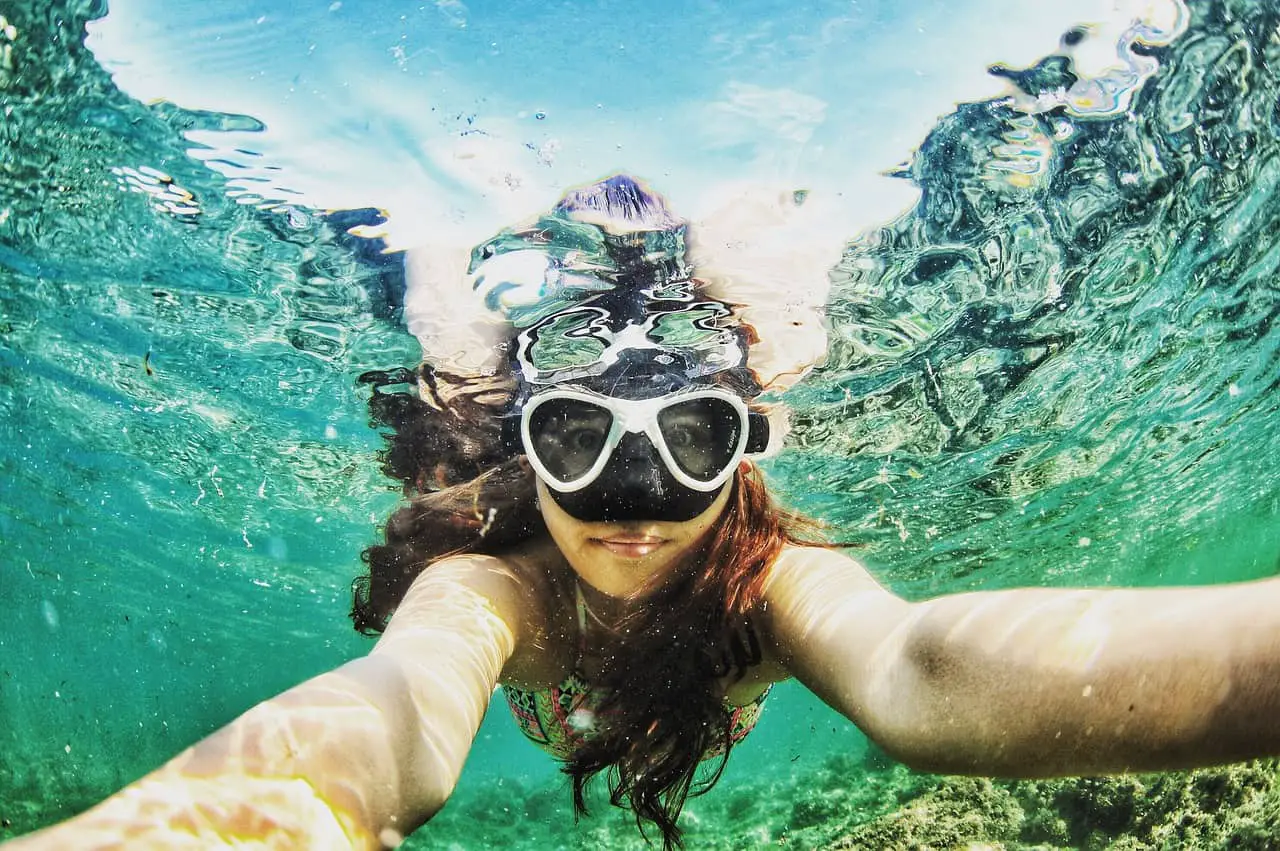Table of Contents
Image from Pixabay
Free diving: the experience and adventure of a lifetime! Free diving can be incredibly dangerous, but it can also give willing and experienced adventurers a thrill like no other. Across the world, people are free diving for fun, for competition, and to carry on their culture’s traditions and ways of life. Free diving is so much more than a fear-filled race to stay under the water! The deepest free dive is a source of contention and competition.
Read on to discover the different types of free diving, the history of the sport, and the reasons people continue to free dive today!
![]()
What Is Freediving?

Image from Pixabay
Free diving refers to diving under the water without anytype of breathing support. Free diving especially refers to diving without support in deep water and is a worldwide competitive sport.
![]()
What Are Different Types of Free Diving?
There are multiple areas of free diving: according to members of one free diving discipline, other free diving disciplines or practices are less legitimate than others. Some free diving practices use weights to enable the diver to reach lower depths more quickly, while other free divers dive with fins or other non-oxygen instruments to move more quickly under the water.
![]()
Free Diving Disciplines

Image from LeisurePro.com
There are many types of free diving, each with their own requirements, regulations, and deepest free dive awards.
NLT
No Limit diving (NLT) enables participants to go the deepest underwater with the most speed. These divers use weights to get them lower quickly and then they use balloons and inflatable diving vests to propel them to the surface quickly. This is one of the most competitive types of free diving and lets participants get some of their deepest free dives.
VWT
Variable Weight diving (VWT) uses sleds to get divers down and back up. The divers still use weights and are able to pull on the sled ropes to get back to the top of the water. VWT diving was one of the first types of diving to use sleds to maneuver through the water.
CWT
Constant Weight diving (CWT) is one of only three diving disciplines that is a part of international diving competitions. The diver cannot adjust his or her weight and does not pull on the rope; the free diver uses fins and arms to propel their body through the water.
CNF
Constant Weight Without Fins (CNF) is exactly what it sounds like: the diver does not use fins or any other type of product to help them get deeper down or to the surface more quickly. The diver must rely even more heavily on their muscle strength and their awareness of their body when doing a CNF dive. This is one of the most difficult diving disciplines because of the limitations on helpful equipment.
FIM
Free Immersion (FIM) divers use rope to get themselves down into the water and to propel themselves back up again. They do not use fins or air vests, and they can decide whether to enter the water head or feet first.
DWF
Dynamic With Fins diving (DWF) is slightly different than the previous disciplines as it focuses on distance more than depth. Divers use fins to propel themselves forward, and in order to count towards competition distances, these dives must take place in pools over 25 meters in length.
DNF
Dynamic Without Fins diving (DNF) is almost exactly the same as Dynamic With Fins, except divers in this discipline are unable to use fins to help them move more quickly. This competitive discipline focuses on technique more than anything else. The deepest free dive in the Dynamic With Fins and Dynamic Without Fins disciplines are likely much shallower than the deepest free dives in other disciplines that put less focus on horizontal distance.
STA
Static Apnea diving (STA) is primarily focused on how long the diver can hold their breath. In fact, the diver does not have to move at all once they are submerged in the water, and their whole body doesn’t even need to be under water! The deepest free dive of all time certainly will not be in this discipline.
![]()
When Was the First Free Dive?
People are believed to have been free diving for thousands of years! Originally, people competed their deepest free dives to get food and materials to sell in order to live, but as the years progressed, it became a combination of livelihood and hobby.

Image from ActionSport-Mallorca.com
![]()
Why Do People Free Dive?
People free dive for a variety of reasons, each motivation as unique as the free diving individual. Some people free dive to find things in the water: fish or other sea life to provide sustenance, shells to sell, lost artifacts to examine and explore; others free dive to see if they can and to test the boundaries of the human body and spirit. The world beneath the ocean’s surface is unique and beautiful, and many free divers believe that free diving is the best way to experience its true wonder.
![]()
Free Diving Competitions
There are a plethora of free diving competitions throughout the world each year. The AIDA (International Association for the Development of Apnea) hold competitions in multiple disciplines all over the world year round.Free diving is considered by some to be an ancient sport- in fact, there is even a Greek myth that features a sponge diver who discovers an ancient anchor and brings it to the surface!
![]()
What Happens During a Free Dive?
According to world famous free diver James Nestor, free diving is about more than just what can be seen under the water’s surface and is certainly bigger than just holding your breath. He explains free diving as an almost magical experience and suggests that, while it shouldn’t be technically possible, it is an incredibly mind-altering experience.When a person’s face comes in contact with water, a number of things automatically happen. The heart slows down and blood rushes to the body’s core. A practiced and disciplined free diver is able to control (to some extent) these automatic bodily functions and continue living for a limited period of time despite their body’s natural reflexes under water. The deepest free dives are affected much more by these automatic processes.During a free dive, including the deepest free dive, the heart rate of the diver lowers by about 25 percent, and blood moves around the body from the hands and feet to the most important body parts centered in the core of the body. Mentally, the diver is in a state of meditation- by the time some of the deepest free divers get to below 250 or 300 feet, their hearts only beat about 14 times per minute!
![]()
What Was the Deepest Free Dive
The deepest free dive depends on who you ask! Fans of different free diving disciplines have different deepest free dive requirements: for example, a weighted free diver would likely say that the deepest free dive was deeper than a purist who does not dive without weights or fins.

Image from DivingHalkidiki.Wordpress.com
Other than the limits that people put on their free diving practice, there are likely few limitations to what the true deepest free dive could be: scientists claimed in 1949 that people couldn’t dive past 100 feet and remain alive, but the current deepest free dive is over 700 feet!
The record for the deepest free dive is fraught with competition and disagreement. While some claim that Herbert Nitsch is the current record holder for the deepest free dive in the world with a dive of 253 meters (discipline: no limit), others give that title to Goran Colak, who had the deepest free dive at a depth of 281 meters in 2014 (discipline: dynamic with fins). Depending on the type of free dive discipline, the deepest free dive is not even connected to the depth of the diver! Static Apnea diving, for example, is measured in time- the record holder is Stephan Mifsud with a record of 11 minutes and 35 seconds underwater in 2009.
![]()
Tips and Hints for a Safe and Enjoyable Free Dive

Image from SpearoScout.com
Free diving can be incredibly dangerous, but with the proper preparation and the right people, it doesn’t have to be! Follow these guidelines for the free dive of a lifetime!
Free Dive with a Buddy
Whether or not you have a partner when you free dive (which is always a good idea), it is essential that there is someone on the surface watching out for you. It doesn’t take long for a free dive to become dangerous, so practice hand signals and refresh your free dive education before diving in.
Review the Safety Rules First
In addition to reviewing hand signals with your buddy before diving, make sure you review your discipline’s safety rules. It can be easy to go too deep and black out or not give yourself enough time to return to the surface- better a shallow first dive and survival than the deepest free dive followed by injury or death!
Give Yourself Time to Rest
Plan on resting for at least double the time of your dive between each dive. When you dive, the oxygen levels in your blood drop; if you don’t give your body enough time to relax and rejuvenate, you might have a much more dangerous next dive.
Practice Your Breathing and Meditation
When you go into a free dive, your mind enters a meditative state. Practice breathing slowly and concentrating on your breathing before you begin your dive, and remember to continue breathing slowly for at least 20 seconds after you resurface to let your body adjust to the air.
![]()
Conclusion
Free diving is an amazing and historic sport, and with the proper knowledge, equipment, and partner(s), it can be a phenomenal adventure for you!

